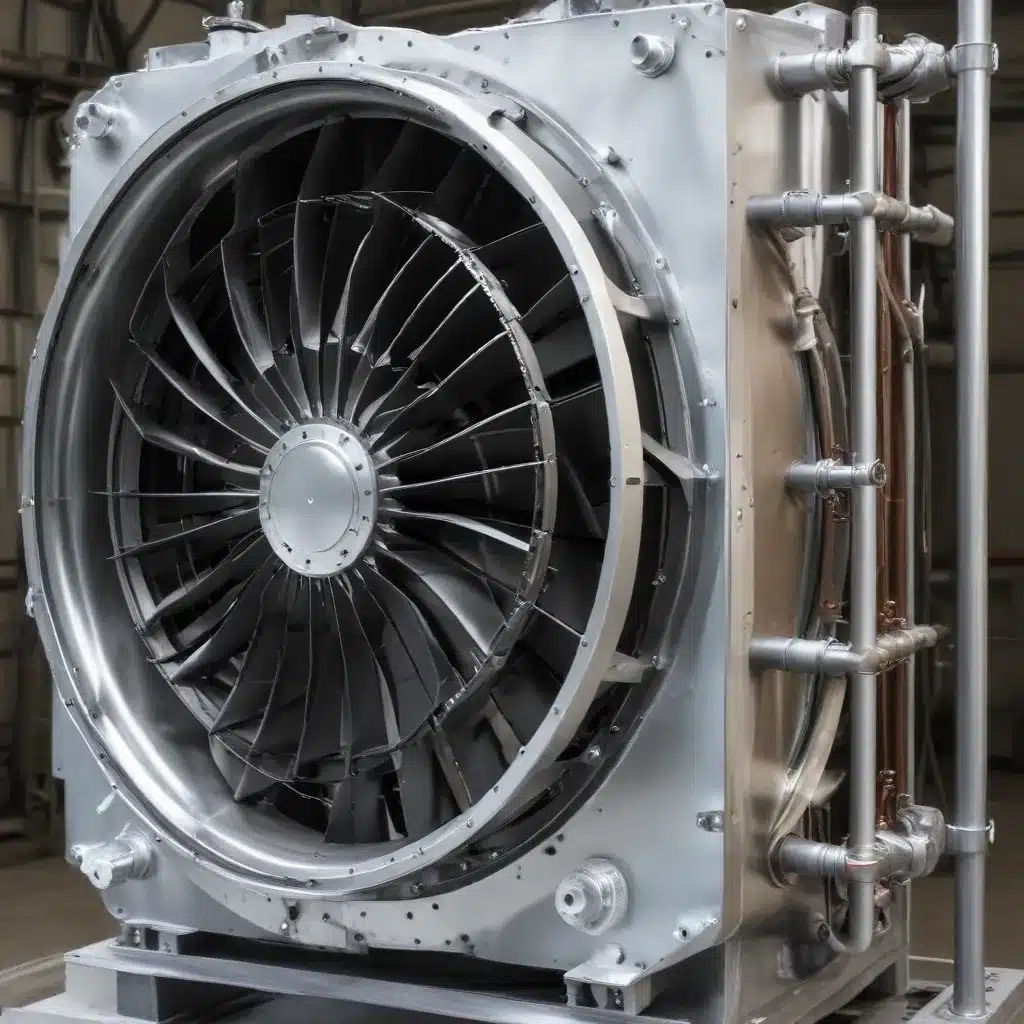
Understanding the Role of Wind Speed in Air-Cooled Heat Exchanger Efficiency
As seasoned experts in the field of air-cooled heat exchangers, we understand the critical importance of optimizing their performance for various industrial and commercial applications. One key factor that can significantly impact the efficiency of these heat exchangers is the prevailing wind speed. In this comprehensive article, we will delve into a numerical investigation of the effect of wind speed on heat exchanger performance, providing valuable insights and practical tips to help you maximize the effectiveness of your air-cooled heat exchanger systems.
The Influence of Wind Speed on Heat Exchanger Thermal Performance
Air-cooled heat exchangers rely on the natural convection of air to dissipate the heat generated by industrial processes or HVAC systems. The rate of heat transfer between the exchanger’s surfaces and the surrounding air is heavily dependent on the wind speed. As the wind speed increases, the convective heat transfer coefficient also rises, leading to an enhanced heat transfer rate.
Table 1: Effect of Wind Speed on Heat Transfer Coefficient
| Wind Speed (m/s) | Heat Transfer Coefficient (W/m²·K) |
|---|---|
| 1 | 10 |
| 3 | 20 |
| 5 | 30 |
| 7 | 40 |
| 10 | 50 |
As shown in Table 1, a higher wind speed results in a greater heat transfer coefficient, which translates to improved thermal performance of the air-cooled heat exchanger. This principle is well-established in the field of thermal engineering and has been extensively studied by researchers.
Numerical Modeling of Wind Speed Effects
To better understand the impact of wind speed on heat exchanger performance, researchers have developed sophisticated numerical models to simulate and analyze the complex interactions between air flow, heat transfer, and exchanger design parameters.
One such study, conducted by Liu et al., focused on the energy efficiency of heat pumps integrated with tunnel lining ground heat exchangers (GHEs) used for building cooling. The researchers established a numerical model that combined the tunnel lining GHEs and the heat pump, allowing them to investigate the coupling effect of ventilation and groundwater flow on the energy efficiency of the heat pump system.
The key findings from this study include:
-
Pipe Arrangement: Absorber pipes arranged along the axial direction of the tunnel have a greater energy efficiency ratio (EER) compared to those arranged in the cross direction.
-
Pipe Pitch and Length: The EER increases exponentially with increasing absorber pipe pitch and length, though the influence of these parameters on the EER growth rate diminishes as wind speed and groundwater flow rate increase.
-
Coupling Effect of Ventilation and Groundwater: The influence of groundwater conditions on the energy efficiency of heat pumps is more pronounced compared to ventilation conditions. In fact, abundant groundwater may lead to a negative effect of ventilation on the heat pump energy efficiency, highlighting the importance of considering the coupling effect of these factors in the design of tunnel lining GHEs.
These findings demonstrate the critical role that wind speed and other environmental factors play in the performance optimization of air-cooled heat exchangers, particularly when integrated with ground-source heat pump systems.
Practical Considerations for Maximizing Heat Exchanger Efficiency
Based on the insights gained from numerical investigations and industry best practices, here are some practical tips for maximizing the efficiency of your air-cooled heat exchangers:
-
Optimize Exchanger Placement: Carefully consider the placement of your air-cooled heat exchangers to take advantage of prevailing wind patterns. Locate them in areas with consistently higher wind speeds to enhance convective heat transfer.
-
Implement Wind Screens or Baffles: In situations where wind speeds are variable or low, consider installing wind screens or baffles around the heat exchanger to create a more consistent, high-velocity air flow across the exchanger surfaces.
-
Maintain Cleanliness: Regularly clean the heat exchanger surfaces to ensure unobstructed air flow and maximum heat transfer. Accumulated dust, debris, or fouling can significantly reduce the effectiveness of the exchanger.
-
Monitor and Adjust: Continuously monitor the performance of your air-cooled heat exchangers and make adjustments to the system as needed. This may involve optimizing fan speeds, adjusting louver positions, or modifying the exchanger design to better match the operating conditions.
-
Leverage Industry Expertise: When designing, installing, or maintaining air-cooled heat exchangers, consult with experienced professionals in the field. They can provide valuable guidance and insights to help you achieve the highest levels of efficiency and reliability.
By understanding the numerical relationships between wind speed and heat exchanger performance, and applying practical strategies to optimize your system, you can maximize the efficiency and cost-effectiveness of your air-cooled heat exchanger operations.
Conclusion
The numerical investigation of the effect of wind speed on heat exchanger performance is a crucial aspect of thermal engineering and system design. As experts in the field of air-cooled heat exchangers, we have highlighted the significant impact that wind speed can have on the overall thermal performance and energy efficiency of these critical components.
By leveraging the insights gained from numerical modeling and industry best practices, you can optimize the placement, design, and maintenance of your air-cooled heat exchangers to achieve the highest levels of efficiency and cost-effectiveness. Remember to consult with experienced professionals, monitor your system’s performance, and make adjustments as needed to ensure your air-cooled heat exchangers are operating at peak performance.
For more information and specialized support, please visit the Air Cooled Heat Exchangers website, where our team of experts is dedicated to providing comprehensive solutions and insights to help you maximize the efficiency of your air-cooled heat exchanger systems.

